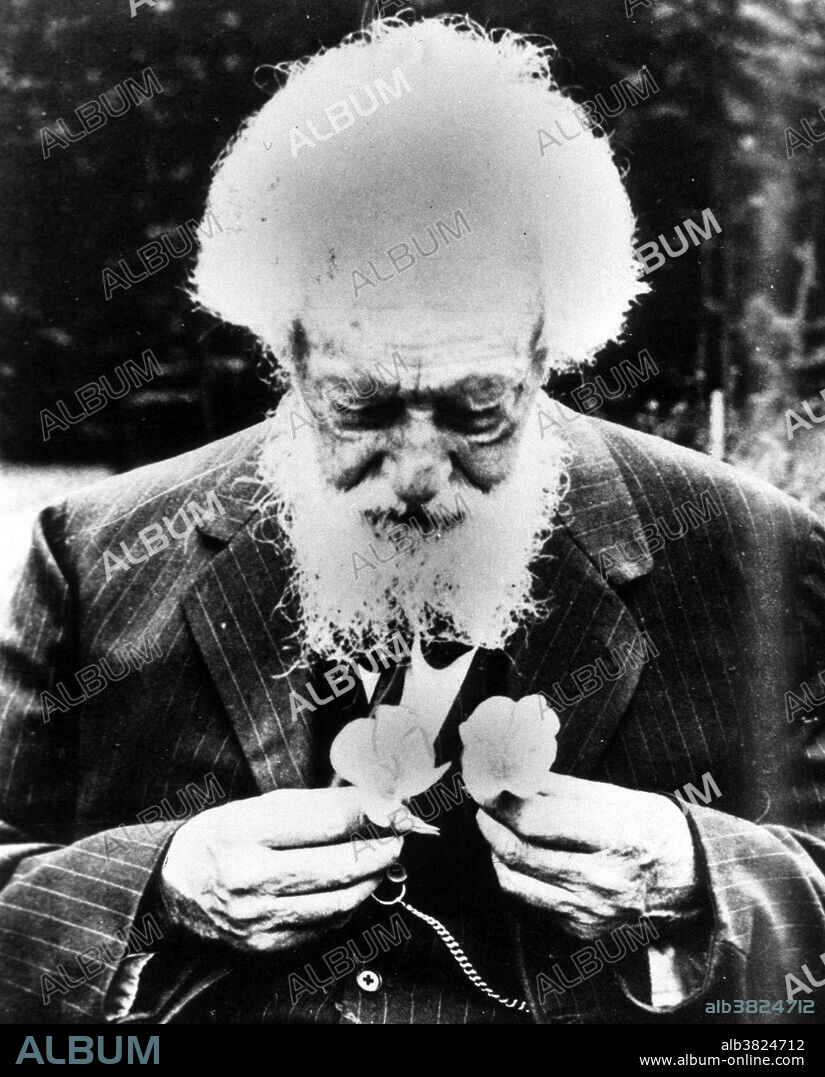alb3824712
Hugo Marie de Vries, Dutch Botanist and Geneticist

|
Add to another lightbox |
|
Add to another lightbox |



Buy this image.
Select the use:

Title:
Hugo Marie de Vries, Dutch Botanist and Geneticist
Caption:
Hugo Marie de Vries (1848-1935) was a Dutch botanist and one of the first geneticists. In 1886 he discovered new forms of the evening primrose (Oenothera lamarckiana) growing wild in a meadow. Taking seeds from these, he found that they produced many new varieties in his experimental gardens; he introduced the term mutations for these suddenly appearing variations. In 1889, De Vries published his book Intracellular Pangenesis. He postulated that different characters have different hereditary carriers and that inheritance of specific traits in organisms comes in particles. He called these units pangenes (20 years later shortened to genes by Wilhelm Johannsen). In his two-volume publication The Mutation Theory (1900-1903) he postulated that evolution, especially the origin of species, might occur more frequently with such large-scale changes than via Darwinian gradualism, basically suggesting a form of saltationism. De Vries's theory was one of the chief contenders for the explanation of how evolution worked. He continued his studies with new forms until his death in 1935.
Credit:
Album / NLM/Science Source
Releases:
Model: No - Property: No
Rights questions?
Rights questions?
Image size:
2850 x 3536 px | 28.8 MB
Print size:
24.1 x 29.9 cm | 9.5 x 11.8 in (300 dpi)
Keywords:
1848 • 1886 • 1889 • 1900-1903 • 1935 • 19TH CENTURY • 20 XX TWENTIETH CENTURY • 20TH CENTURY • 20TH • BEARD • BEARDED • BOTANICAL • BOTANIST • BOTANY • BOTANY • BOTANY • BW • CELEBRITIES • CELEBRITY • COINED THE TERM • CONCEPT OF GENES • DE VRIES • DEVRIES • DISCOVERED NEW FORMS • DUTCHARTIST • EVOLUTION • EXPERIMENTAL GARDENS • FACIAL HAIRSTYLE • FAMOUS PEOPLE • FAMOUS • FIGURE • GENES • GENETICIST • GENETICS • H. DE VRIES • HEREDITY CARRIERS • HISTORIC • HISTORICAL • HISTORY • HUGO DE VRIES • HUGO MARIE DE VRIES • HYBRID • HYBRIDIZATION • HYBRIDIZING • ILLUSTRATOR • IMPORTANT • INHERITANCE • INTRACELLULAR PANGENESIS • LAWS OF HEREDITY • MALE • MAN • MEN • MUTATION THEORY • MUTATION • MUTATIONS • NOTABLE • ORIGIN OF SPECIES • PAN GENES • PEOPLE • PERSON • PERSONALITIES • PERSONALITY • PHOTO • PHOTOGRAPH • PORTRAIT • POSTULATED • POTRAIT • RESEARCH • SALTATIONISM • SCIENCE • SCIENCE: EVOLUTION • SPECIFIC TRAITS • TWENTIETH CENTURY • WELL-KNOWN
 Pinterest
Pinterest Twitter
Twitter Facebook
Facebook Copy link
Copy link Email
Email
